Special Correspondent Guy Toremans talks to Rear Admiral Fabio Agostini of the Italian Navy, operational commander of the EU Naval Force Mediterranean Operation Irini (EU NAVFOR MED IRINI). He reflects on the complexity of the task and the challenge of preventing arms flowing into Libya to feed its civil war while also attempting to stop the illegal export of oil that similarly fuels the conflict.
• See important note at the end of this article.
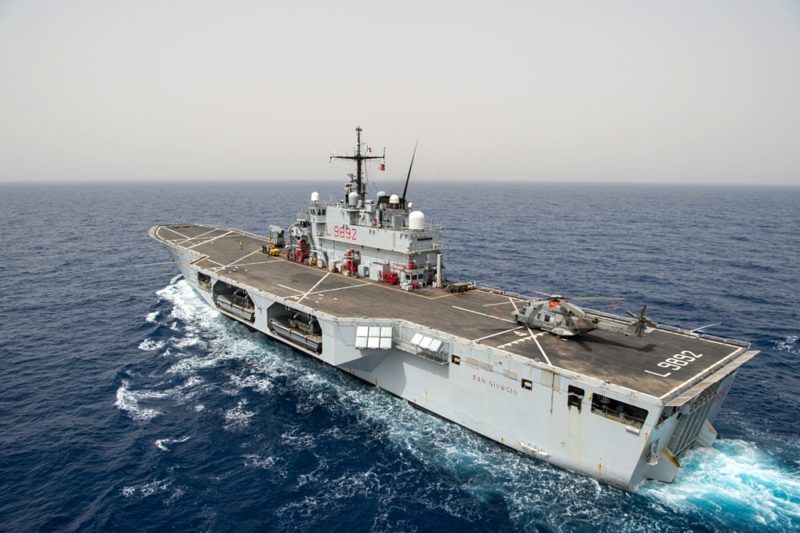
In January the Berlin Libya Conference brought together parties committed to step up the EU’s efforts to enforce the UN arms embargo on Libya established by UN Security Council Resolution (UNSCR 1970) in 2011, which was extended via UNSCR 2292 in 2016 and UNSCR 2473 in 2019. Finally, on March 31, after two-and-a-half months of intra-European wrangling and arguing, the EU Council launched Operation EU NAVFOR MED IRINI.
Irini is the Greek word for ‘peace’ and it has replaced the previous EU NAVFOR MED SOPHIA, which focused on countering trans-Mediterranean people smuggling networks.
The new operation, staged under the control of the EU’s High Representative for Foreign Affairs and Security Policy, is mandated initially to last until March 31, 2021. Headquartered in Rome, Operation IRINI is led by the Italian Rear Admiral Fabio Agostini, assisted by a 150-strong joint international staff.
IRINI also hosts a Crime Information Cell (CIC) comprising staff mainly from the Italian Carabinieri along with the law enforcement authorities of Member States and EU agencies. This cell facilitates the receipt, collection and transmission of information on the arms embargo, illegal exports of petroleum from Libya and on human smuggling and trafficking, as well as crimes relevant to the security of the operation.
On April 28 the initial Force Generation Conference ended, and Operation IRINI was able to start the planning its ‘at sea’ operations. The maritime part of the operation commenced on May 4, with the arrival on station of the French destroyer FS Jean Bart and a Fairchild Merlin IVC patrol aircraft from Luxembourg. These were soon followed by a Polish B- 28B1R Antonov Bryza aircraft and a German P-3C Orion. These air assets operate from the Sigonella Air Base on Sicily. On June 4 the Greek frigate Spetsai joined the operation, as FS Jean Bart detached from the operation on 27 May.
Initially Operation IRINI faced some criticism. Several member states were worried that the EU’s renewed naval presence could become a ‘pull’ factor with immigrants. It was felt that by offering to rescue migrants, the naval units would encourage people traffickers to send their desperate clients out in unsafe boats. Other member states did not agree with the procedures for the disembarkation of migrants and port diversions. Malta announced in early May that it was no longer prepared to commit military assets and threatened to use its veto to terminate the mission. However, eventually a consensus was reached. Therefore, Rear Admiral Agostini finds himself heavily engaged in running Operation IRINI today.
I began the interview by asking how he prepared himself to take command.
“Having previously been in charge of Operation SOPHIA proved very useful. Obviously, I could profit from the operational benefits and experiences gained, allowing a seamless handover and ensuring an operational continuity. I would like to point out that SOPHIA was the first naval EU Operation in the central Mediterranean and so tested collaboration with other organizations such as Frontex, EUROPOL, UN Agencies and the Italian Direzione Nazionale Anti-Mafia.”
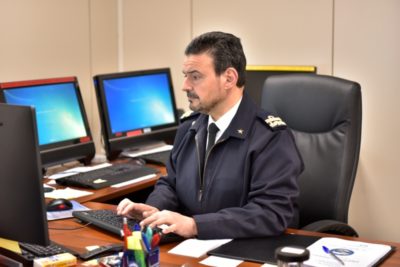
What are the differences between SOPHIA and IRINI?
“Although the Area of Operation is almost the same, their mandates and operational objectives differ. Whereas SOPHIA focused on combatting migrant smuggling, IRINI is primarily intended to implement the UNSRs authorising the arms embargo. The operation’s secondary tasks include: monitoring and gathering of information on illicit exports from Libya of petroleum, crude oil and refined petroleum products; assisting with capacity building of the Libyan Navy and Coast Guard in law enforcement tasks; contributing to the disruption of the business model of human trafficking networks.”
What is a normal working day for you, and your staff?
“Our headquarters in Rome works 24/7. Personally, I start very early in the morning, checking e-mails and messages on classified networks and then attend the Morning Staff Briefing for an update on what happened overnight. Throughout the day we follow the ongoing activities, look at the daily situation reports and the schedules for air, surface and submarine operations. I am also in constant touch with the Force Commander, Rear Admiral Ettore Socci and we have regular secure chats and routine Video Tele-Conferencing meetings. The European Union Satellite Centre provides us with satellite and aerial imagery. All this allows us to compile a comprehensive picture of daily activities in the Mediterranean, almost in real-time. When requested or needed, I fly to Brussels to update the relevant EU Committees about the operation.”
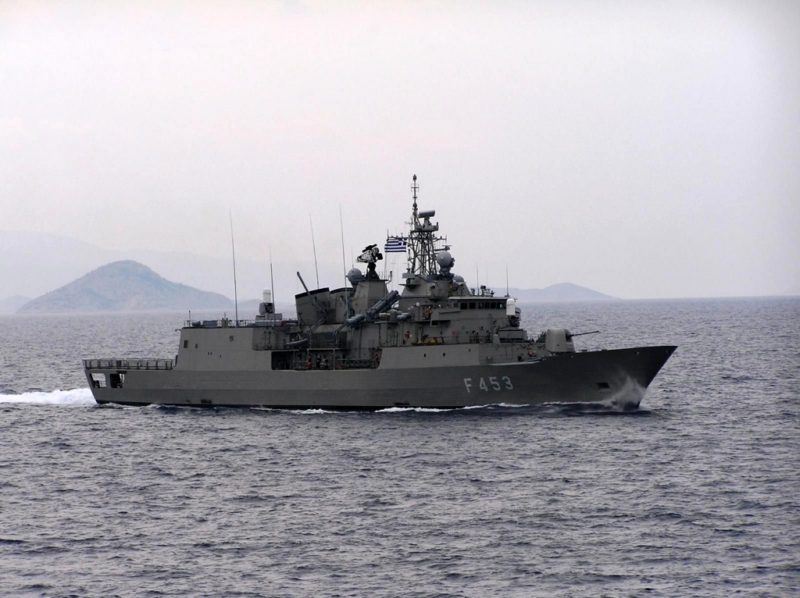
Can you provide us some details about the organization of your staff and what assets are assigned to the operation, or scheduled to join?
“My 150-strong staff is made up of Navy, Air Force and Army personnel from 20 Member States. My deputy is French Rear Admiral Jean-Michel Martinet and my Chief of Staff is Greek, Commodore Theodoros Mikropoulos. The IRINI Force Commander and the flagship are to alternate between Italy and Greece every six months. The current commander is Rear Admiral Ettore Socci, of the Italian Navy. He was previously – since June 2019 – Force Commander of Operation SOPHIA. He will remain in command of IRINI until mid-October 2020 after which Commodore Mikropoulos will take the helm. With regard to the assets continuously assigned to the operation, as of July 17 we had the Landing Platform Dock ITS San Giorgio, assuming the role of flagship and the Greek frigate Spetsai along with three maritime patrol aircraft, though the German P-3C Orion, is scheduled to leave in August.
The ITS San Giorgio embarks an EH101 helicopter and a boarding team from the San Marco Brigade. In addition, Italy is providing an Unmanned Aerial Vehicle. Occasionally a ATR 72 MPA, a Gulfstream G550 Air Early Warning aircraft and a submarine are made available.
A French MPA and a Greek AEW aircraft are available two days a month, while Germany has promised to assign a ship by August. In addition, a number of vessels in associated support are provided by France, Greece and Italy.”

Can you give us some statistics relating to the operation as it has proceeded so far?
“Since the start of IRINI there have been 269 hailings *** of which 220 were in relation to the arms embargo and 49 related to violations on oil smuggling. We conducted three boardings concerning the arms embargo and one connected to oil smuggling. Furthermore, we have monitored flight patterns of military planes arriving in Libya.”
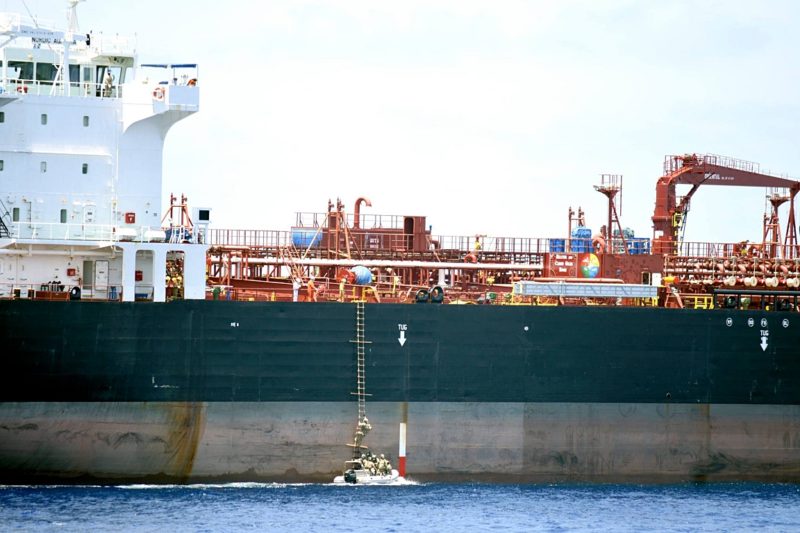
I suppose that you would like to see more resources being committed, such as additional ships, MPAs and drones?
“The COVID-19 pandemic slowed down the Force Generation Process. Nonetheless, almost all member states made efforts to contribute to the operation, either through active support – personnel, assets and intelligence – or with standby assets. More assets should be made available, though. We are doing our utmost with the assets currently committed. However, we can only achieve our tasks in an effective manner when there is a continuous availability of sufficient assets, in particular air-defence warships, Airborne Early Warning aircraft, as well as air-to-ground surveillance assets such as drones. Assets such as the French air defence destroyer FS Jean Bart are particularly valuable as they can monitor both the Sea Lines of Communication and air traffic flow.”
What about the collaboration with NATO?
“The EU and NATO are used to work together closely. Operation SOPHIA and NATO’s Operation Sea Guardian cooperated effectively. Currently discussions are underway to establish a similar arrangement for cooperation between IRINI and the NATO operations.”
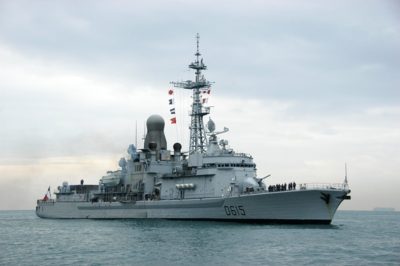
What is the remit of IRINI when it comes to a suspect vessel?
“On June 5 the UN Security Council adopted Resolution 2526 (2020) that extended the authorisation to inspect vessels on the high seas off the coast of Libya that are suspected of violating the arms embargo. We can implement the embargo by a Maritime Interdiction Operation and by monitoring both aerial and land routes.”
As you have already mentioned, Operation IRINI was launched amid the COVID-19 pandemic. What has been the impact of that upon your activities?
“The pandemic obliged us to take both internal and external, preventive and containment measures to reduce the risk of contagion. We issued Standard Operating Procedures to deal with the necessary anti-COVID measures. As an external measure EU member states must assign COVID-free assets. In our HQ social distancing, remote working and constant personnel education are applied. All staff members have followed the compulsory COVID-19 course through videoconferences. There is a thermo-scanner at the entrance to the HQ and nobody is allowed to enter the building with a temperature of more than 37.5 degrees C or without a mask.”
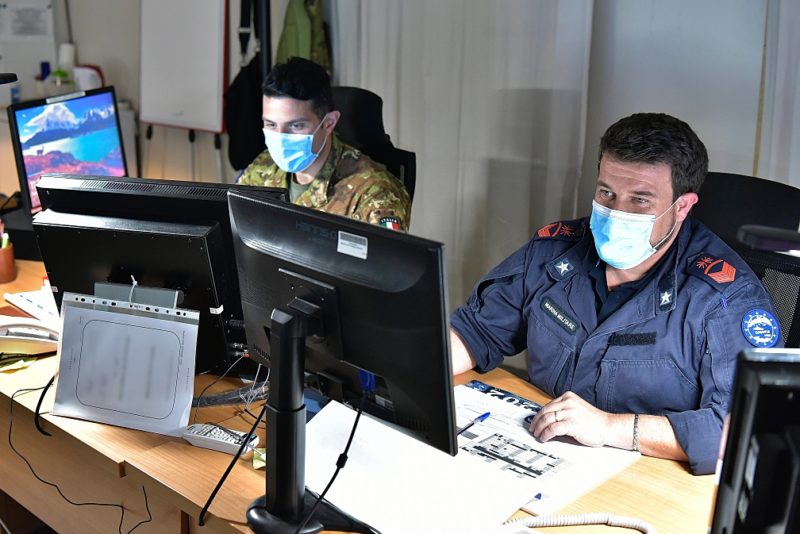
What if any of the ships take refugees onboard who could be carriers of the virus?
“Although not part of our mandate, search and rescue operations remain an international obligation. All ships must render assistance to those in peril at sea. Should any of the ships be involved in such incidents, arrangements are in place to carry it out as effectively as possible and bring the rescued people to an EU member State. If the ships have to take refugees onboard we have specific procedures, in line with World Health Organisation and EU rules, to avoid the risk of contagion for the crews. Each ship in IRINI has stored on board all the necessary materials to avoid contagion.”
Although this operation is an effective tool to implement the arms embargo, it only addresses the symptoms. What could be done to better, or differently, manage these problems?
“IRINI is born to help diplomacy through the application of an arms embargo with the aim of facilitating the achievement of a permanent ceasefire. I am aware that there are many political and diplomatic difficulties, especially due to the many international players involved, each with their own agenda. Beyond what the goals of individual nations are, a stable Libya should be everyone’s objective, because it will increase regional security. Mr Borrell, the EU High Representative for Foreign Affairs & Security Policy and Vice-President of the EU Commission, underlined that EU NAVFOR MED IRINI is an important part of the solution to the Libyan crisis, but certainly not the solution to all the problems.”
Based on experience so far how would you judge the operation’s strengths, and weaknesses, if any? What aspects should be objective of greater attention? ++
“I am aware that there are many political and diplomatic difficulties, especially due to the many international players involved, each with their own agenda. Beyond what the goals of individual nations are, a stable Libya should be everyone’s objective, because it will increase regional security. To achieve results, it is necessary that political will demonstrated in launching the operation is translated into more concrete contributions to Operation IRINI.”
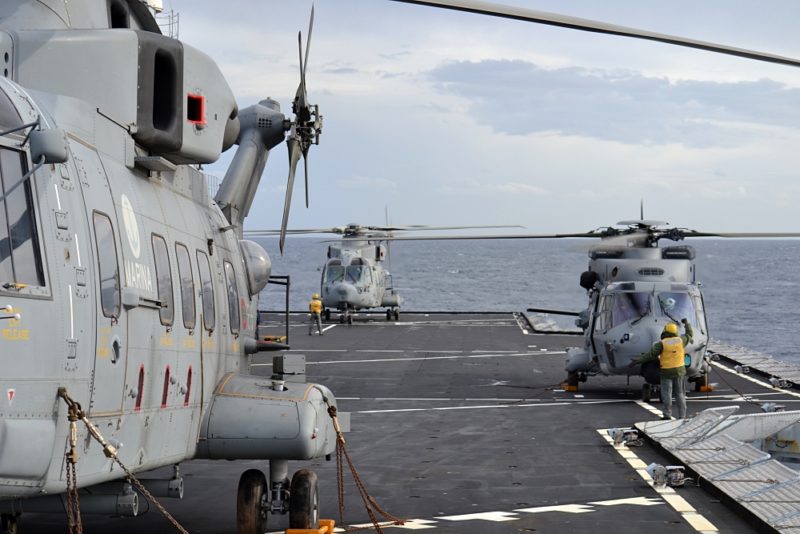
How do you see the operation evolving, both in the short and long term?
“Despite the few assets currently available, IRINI has already showed that we can achieve results in an effective, impartial and balanced manner. I am confident that with further assets Operation IRINI will be even more effective. Obviously, this is not a quick process and will take some time. The EU’s involvement is indispensable as it remains the only regional broker willing to monitor and enforce the arms embargo.”
What is the biggest challenge being in command of Operation IRINI?
“It goes without saying that I am honoured to be entrusted with this important, yet demanding and complex task. It is quite a challenge. Operation IRINI has an ambitious mandate but also a noble and absolutely fundamental objective for the security of the Mediterranean and the control of the southern border of Europe, i.e. to contribute to the EU’s efforts for the peace process in Libya.
Is there anything that keeps you awake at night?
“When I go home in the evening after at least 12 hours of work I am quite tired. And after having had dinner with my wife I fall asleep easily.”

-
Note: This is the corrected version of an interview published in the September 2020 edition of WARSHIPS IFR, in which certain facts were attributed in a quote to Rear Admiral Agostini when they actually formed part of the introductory commentary by the journalist/interviewer. We would like to apologise to Rear Admiral Agostini for this error. Such an event is unprecedented in the 22-year history of this publication.

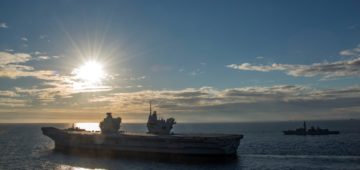


Comments
Sorry, comments are closed for this item